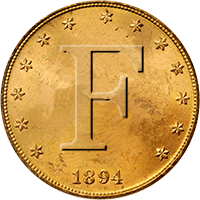Coinseeker 78
New member
I have set my F70 with the 11 inch DD coil to the following settings. 99 sensitivity, 9 threshold 50 disc with nickles notched back in. speed DEF and 4 tones. EMI cancelled out with hertz setting. The soil phase runs from about 64 to 70. Magnetic earth bar on 1 generally. Air tests with these settings run about 13 inches. What disadvantages does these settings impose on the detector. The detector seems to run much quieter and locks on very well on coins, Am I imposing a great amount of masking with these settings? Thanks in advance.



 This can cause us to miss targets because we do not hear them over the chatter so turning the sensitivity down a little to stabilize things lets us hear the targets better. It also allows for less fatigue during a long days hunt at minimum or very little depth loss over all considering the detector is now running smooth and stable allowing use to pay attention to what were hearing in the headphones now instead of erratic noise. Pushing a detector to its limits is not always the best way to go nor does it always get us more depth. Again the ground conditions along with the ground balance of the detector dictates the total usable sensitivity gain we can get over all out of the detector. Depth is really a side affect of these variables anyway and is subject to change based on any changes in the ground conditions, ground balance of the detector or sensitivity settings of the detector.
This can cause us to miss targets because we do not hear them over the chatter so turning the sensitivity down a little to stabilize things lets us hear the targets better. It also allows for less fatigue during a long days hunt at minimum or very little depth loss over all considering the detector is now running smooth and stable allowing use to pay attention to what were hearing in the headphones now instead of erratic noise. Pushing a detector to its limits is not always the best way to go nor does it always get us more depth. Again the ground conditions along with the ground balance of the detector dictates the total usable sensitivity gain we can get over all out of the detector. Depth is really a side affect of these variables anyway and is subject to change based on any changes in the ground conditions, ground balance of the detector or sensitivity settings of the detector.